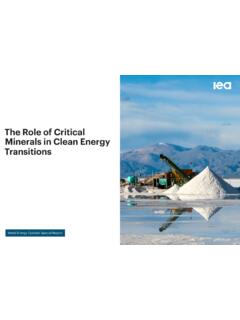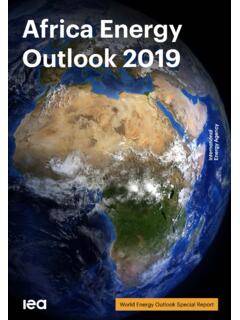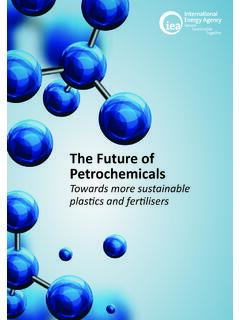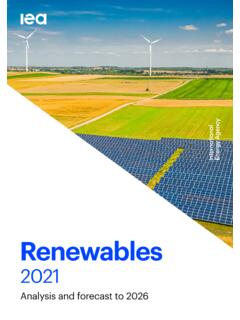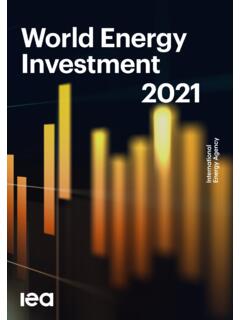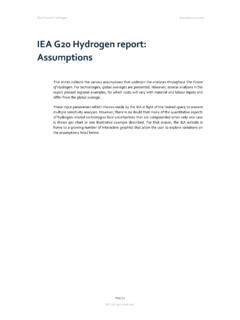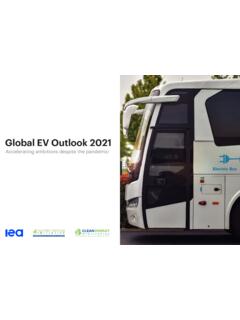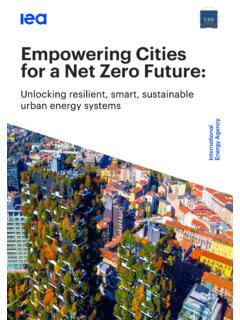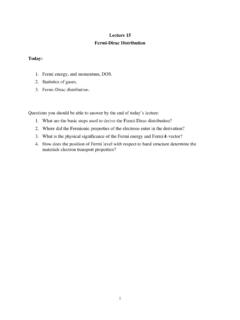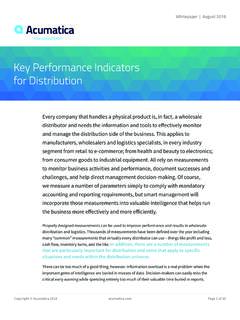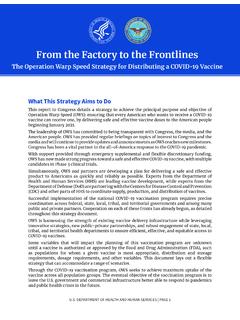Transcription of Key World Energy Statistics 2020 - .NET Framework
1 Statistics reportKey World Energy Statistics 2020 August 2020 KEY World Energy Statistics Please note that this publication is subject to specific restrictions that limit its use and distribution . The terms and conditions are available online at : IEA. All rights Energy Agency Website: Austria BelgiumCanadaCzech Republic DenmarkEstoniaFinland France Germany Greece HungaryIreland ItalyJapanKorea Luxembourg Mexico Netherlands New Zealand NorwayPoland Portugal Slovak Republic Spain Sweden Switzerland Turkey United Kingdom United StatesINTERNATIONAL Energy AGENCYThe IEA examines the full spectrum of Energy issues including oil, gas and coal supply and demand, renewable Energy technologies, electricity markets, Energy efficiency, access to Energy , demand side management and much more.
2 Through its work, the IEA advocates policies that will enhance the reliability, affordability and sustainability of Energy in its 30 member countries, 8 association countries and membercountries The European Commission also participates in the work of the IEAIEA associationcountries BrazilChinaIndiaIndonesiaMoroccoSingapor eSouth AfricaThailand* 3 Foreword The International Energy Agency (IEA) was established in 1974 to promote Energy security and provide authoritative analysis on Energy for its member countries and beyond. Energy Statistics have always been and remain at the heart of the work of the IEA. They provide a comprehensive view on Energy production, transformation and final use for all forms of Energy as well as the factors that influence Energy choices such as prices and RD&D and the wider impact of Energy use on CO2 emissions.
3 Over the years with input from Energy statisticians all around the World , the IEA has gained recognition as the World s most authoritative source for Energy Statistics . Energy Statistics are produced to be used: to monitor changes in Energy production and use; inform debate; and provide a wider understanding of Energy , including helping countries understand their Energy transitions. In Key World Energy Statistics (KWES), we look to highlight some of the key facts and trends from across the vast number of datasets the IEA produces to enable everyone to know more about Energy . As part of the IEA modernisation programme, KWES contains more information on Energy efficiency and renewables, more geographic data including on the IEA Family , created through our Open Doors policy and more of the key data to better understand Energy security the heart of our work.
4 Because Energy plays such a vital role in our lives today, I hope that these Statistics will not only inform but also help policy makers and others to make wise decisions so that Energy is produced and consumed in a secure, affordable, efficient, and sustainable manner. As I like to say, in the World of Energy , data always wins. This has never been more true than it is today, with the World economy undergoing significant structural change as a consequence of Covid-19. I would therefore like to thank the whole team in the IEA s Energy Data Centre under the outstanding leadership of Nick Johnstone for their work in ensuring we all have the data needed to gain a comprehensive understanding of Energy today so that we can better plan for tomorrow.
5 Dr. Fatih Birol Executive Director, International Energy Agency KWES is a summary of the comprehensive data made available by the IEA via its website: 4 Table of contents 5 Supply 6 Transformation 26 Final consumption 34 Energy efficiency 44 Energy balances 46 Prices 50 Emissions 54 Research, development and demonstration (RD&D) 56 Outlook 58 Energy indicators 60 Conversion factors 70 Glossary 73 Supply Key World Energy Statistics 6 World total Energy supply (TES) by source World TES from 1971 to 2018 by source (Mtoe) 1973 and 2018 source shares of TES 1973 2018 6 098 Mtoe 14 282 Mtoe 02 0004 0006 0008 00010 00012 00014 00016 0001971197519801985199019952000200520102 0152018 Coal OilNatural gasNuclearHydroBiofuels and wasteOther Coal gas and gas and World includes international aviation and international marine bunkers.
6 2. In these graphs, peat and oil shale are aggregated with coal. 3. Includes geothermal, solar, wind, tide/wave/ocean, heat and other sources. Source: IEA, World Energy Balances, 2020. Key World Energy Statistics Supply 7 OECD total Energy supply by source OECD TES1 from 1971 to 2019 by source (Mtoe) 1973 and 2019 source shares of TES1 1973 2019 3 740 Mtoe 5 321 Mtoe 01 0002 0003 0004 0005 0006 0001971197519801985199019952000200520102 0152019 Coal OilNatural gasNuclearHydroBiofuels and wasteOther Coal and and Excludes electricity trade. 2. In these graphs, peat and oil shale are aggregated with coal. 3. Includes geothermal, solar, wind, tide/wave/ocean, heat and other sources. Source: IEA, World Energy Balances, 2020.
7 Supply Key World Energy Statistics 8 World total Energy supply by region World TES from 1971 to 2018 by region (Mtoe) 1973 and 2018 regional shares of TES 1973 2018 6 098 Mtoe 14 282 Mtoe 02 0004 0006 0008 00010 00012 00014 00016 0001971197519801985199019952000200520102 0152018 OECDM iddle EastNon-OECD Europe and EurasiaChinaNon-OECD Asia Non-OECD AmericasAfricaBunkers OECD East Europe and Asia Americas East Europe and Asia Americas Non-OECD Asia excludes China.
8 2. Includes international aviation and international marine bunkers. Source: IEA, World Energy Balances, 2020. Key World Energy Statistics Supply 9 World total Energy supply by region World TES from 1971 to 2018 by region (Mtoe) 1973 and 2018 regional shares of TES 1973 2018 6 098 Mtoe 14 282 Mtoe 02 0004 0006 0008 00010 00012 00014 00016 0001971197519801985199019952000200520102 0152018 IEA IEA Association countries IEA Accession countries Other countries Bunkers IEA Association countries Accession countries countries Association countries Accession countries countries Please see geographical coverage for the list of IEA Accession, Association and other countries. 2.
9 Includes international aviation and international marine bunkers. Source: IEA, World Energy Balances, 2020. Supply Key World Energy Statistics 10 World total Energy supply by geographical region World TES from 1990 to 2018 by region (Mtoe) 1990 and 2018 regional shares of TES 1990 2018 8 767 Mtoe 14 282 Mtoe 02 0004 0006 0008 00010 00012 00014 00016 0001990199520002005201020152018 AmericasEuropeAsiaAfricaOceaniaBunkers Includes international aviation and international marine bunkers. Source: IEA, World Energy Balances, 2020. Key World Energy Statistics Supply 11 OECD total Energy supply by region OECD TES1 from 1971 to 2019 by region (Mtoe) 1973 and 2019 regional shares of TES1 1973 2019 3 740 Mtoe 5 321 Mtoe 01 0002 0003 0004 0005 0006 0001971197519801985199019952000200520102 0152019 OECD AmericasOECD EuropeOECD Asia and OceaniaOECD Asia and Asia and Excludes electricity trade.
10 Source: IEA, World Energy Balances, 2020. Supply Key World Energy Statistics 12 Crude oil production World crude oil1 production from 1971 to 2019 by region (Mt) 1973 and 2019 regional shares of crude oil1 production 1973 2019 2 868 Mt 4 439 Mt 01 0002 0003 0004 0005 0001971197519801985199019952000200520102 0152019 OECDM iddle EastNon-OECD Europe and EurasiaChinaNon-OECD Asia Non-OECD AmericasAfricaOECD East Europe and Asia Americas East Europe and Asia Americas Includes crude oil, NGL, feedstocks, additives and other hydrocarbons.
